Epigenetics
- Posted 07.24.07
- NOVA scienceNOW
(This video is no longer available for streaming.) Once nurture seemed clearly distinct from nature. Now it appears that our diets and lifestyles can change the expression of our genes. How? By influencing a network of chemical switches within our cells collectively known as the epigenome. This new understanding may lead us to potent new medical therapies. Epigenetic cancer therapy, for one, already seems to be yielding promising results.
Transcript
Epigenetics
PBS air date: July 24, 2007
CHEERFUL NEIL DEGRASSE TYSON: Did you ever notice that if you get to know two identical twins, they might look alike, but they're always subtly different?
CANTANKEROUS NEIL DEGRASSE TYSON: Yep, whatever.
CHEERFUL NEIL DEGRASSE TYSON: As they get older, those differences can get more pronounced. Two people start out the same but their appearance and their health can diverge. For instance, you have more gray hair.
CANTANKEROUS NEIL DEGRASSE TYSON: No. No, I don't. Identical twins have the same DNA, exact same genes.
CHEERFUL NEIL DEGRASSE TYSON: Yeah.
CANTANKEROUS NEIL DEGRASSE TYSON: And don't our genes make us who we are?
CHEERFUL NEIL DEGRASSE TYSON: Well they do, yes, but they're not the whole story. Some researchers have discovered a new bit of biology that can work with our genes or against them.
CANTANKEROUS NEIL DEGRASSE TYSON: Yeah, you're heavier, and I'm better looking.
CHEERFUL NEIL DEGRASSE TYSON: Yeah, whatever.
NEIL DEGRASSE TYSON: Imagine coming into the world with a person so like yourself, that for a time you don't understand mirrors.
CONCEPCIíN: As a child, when I looked in the mirror I'd say, "That's my sister." And my mother would say, "No, that's your reflection!"
NEIL DEGRASSE TYSON: And even if you resist this cookie-cutter existence, cultivate individual styles and abilities—like cutting your hair differently, or running faster—uncanny similarities bond you together: facial expressions, body language, the way you laugh—or dress for an interview, perhaps, when you hadn't a clue what your sister was going to wear. The synchrony in your lives constantly confronts you.
CLOTILDE: When I see my sister, I see myself. If she looks good, I think, "I look pretty today." But if she's not wearing makeup, I say, "My god, I look horrible!"
NEIL DEGRASSE TYSON: It's hardly surprising because you both come from the same egg. You have precisely the same genes. And you are literally clones, better known, as identical twins.
But now, imagine this: one day, your twin, your clone, is diagnosed with cancer. If you're the other twin, what can you do except wait for the symptoms?
CLOTILDE: I have been told that I am a high risk for cancer. Damocles' sword hangs over me.
NEIL DEGRASSE TYSON: And yet, it's not uncommon for a twin, like Ana Mari, to get a dread disease, while the other, like Clotilde, doesn't. But how can two people so alike, be so unalike?
Well, these mice may hold a clue. Their DNA is as identical as Ana Mari and Clotilde's despite the differences in their color and size. The human who studies them is Duke University's Randy Jirtle.
So, Randy, I see here you have skinny mice and fat mice. What have you done in this lab?
RANDY JIRTLE: Well, these animals are actually genetically identical.
NEIL DEGRASSE TYSON: The fat ones and the skinny ones?
RANDY JIRTLE: That's correct.
NEIL DEGRASSE TYSON: Because these are huge.
RANDY JIRTLE: They're huge.
NEIL DEGRASSE TYSON: Can we weigh them and find out?
RANDY JIRTLE: Sure. So if you take this...
NEIL DEGRASSE TYSON: It looks like they can barely walk.
RANDY JIRTLE: They can't walk too much. They're not going to be running very far. So that's about 63 grams.
NEIL DEGRASSE TYSON: 63 grams.
RANDY JIRTLE: Let's look at the other one.
NEIL DEGRASSE TYSON: So it's half the weight.
RANDY JIRTLE: Right.
NEIL DEGRASSE TYSON: This gets even more mysterious when you realize that these identical mice both have a particular gene, called agouti, but in the yellow mouse it stays on all the time, causing obesity.
Just look at this.
So what accounts for the thin mouse? Exercise? Atkins? No, a tiny chemical tag of carbon and hydrogen, called a methyl group, has affixed to the agouti gene, shutting it down. Living creatures possess millions of tags like these. Some, like methyl groups, attach to genes directly, inhibiting their function. Other types grab the proteins, called histones, around which genes coil, and tighten or loosen them to control gene expression. Distinct methylation and histone patterns exist in every cell, constituting a sort of second genome, the epigenome.
RANDY JIRTLE: Epigenetics literally translates into just meaning "above the genome." So if you would think, for example, of the genome as being like a computer, the hardware of a computer, the epigenome would be like the software that tells the computer when to work, how to work, and how much.
NEIL DEGRASSE TYSON: In fact, it's the epigenome that tells our cells what sort of cells they should be. Skin? Hair? Heart? You see, all these cells have the same genes. But their epigenomes silence the unneeded ones to make cells different from one another. Epigenetic instructions pass on as cells divide, but they're not necessarily permanent. Researchers think they can change, especially during critical periods like puberty or pregnancy.
Jirtle's mice reveal how the epigenome can be altered. To produce thin, brown mice instead of fat, yellow ones, he feeds pregnant mothers a diet rich in methyl groups to form the tags that can turn genes off.
RANDY JIRTLE: And I think you can see that we dramatically shifted the coat color and we get many, many more brown animals.
NEIL DEGRASSE TYSON: And that matters because your coat color is a tracer, is an indicator...
RANDY JIRTLE: That's correct.
NEIL DEGRASSE TYSON: ...of the fact that you have turned off that gene?
RANDY JIRTLE: That's right.
NEIL DEGRASSE TYSON: This epigenetic fix was also inherited by the next generation of mice, regardless of what their mothers ate. And when an environmental toxin was added to the diet instead of nutrients, more yellow babies were born, doomed to grow fat and sick like their mothers.
It seems to me, this has profound implications for our health.
RANDY JIRTLE: It does, for human health. If there are genes like this in humans, basically, what you eat can affect your future generations. So you're not only what you eat, but potentially what your mother ate, and possibly even what your grandparents ate.
NEIL DEGRASSE TYSON: So how do you go to humans to do this experiment, when you have these mice, and they're genetically identical on purpose?
RANDY JIRTLE: That's right.
NEIL DEGRASSE TYSON: So, who is your perfect lab human?
RANDY JIRTLE: Well, then we look for identical humans, which are identical twins.
NEIL DEGRASSE TYSON: Twins, twins.
And that brings us to the reason why we're showing you Spanish twins. In 2005, they participated in a groundbreaking study in Madrid. Its aim? To show just how identical, epigenetically, they are or aren't.
MANEL ESTELLER (Spanish National Cancer Center): One of the questions of twins is, "If my twin has this disease, I will have the same disease?" And genetics tell us that there is a high risk of developing the same disease. But it's not really sure they are going to have it, because our genes are just part of the story. Something has to regulate these genes, and part of the explanation is epigenetics.
NEIL DEGRASSE TYSON: Esteller wanted to see if the twins' epigenomes might account for their differences. To find out, he and his team collected cells from 40 pairs of identical twins, age three to 74, then began the laborious process of dissolving the cells until all that was left were wispy strands of DNA, the master molecule that contains our genes.
Next, researchers amplified fragments of the DNA, until the genes themselves became detectable. Those that had been turned off epigenetically appear as dark pink bands on the gel. Now, notice what happens when the genes from a pair of twins are cut out and overlapped.
The results are far from subtle, especially when you compare the epigenomes of two sets of twins that differ in age. Here, on the left, is the overlapped DNA of six-year-old Javier and Carlos. The yellow indicates where their gene expression is identical.
On the right, is the DNA of 66-year-old Ana Mari and Clotilde. In contrast to the younger twins, hardly any yellow shines through. Their epigenomes have changed dramatically.
The study suggests that, as twins age, epigenetic differences accumulate, especially when their lifestyles differ.
MANEL ESTELLER: One of the main findings of our research is that epigenomes can change in function of what we eat, of what we smoke, of what we drink. And this is one of the key differences between epigenetics and genetics.
NEIL DEGRASSE TYSON: As the chemical tags that control our genes change, cells can become abnormal, triggering diseases like cancer. Take a disorder like MDS, cancer of the blood and bone marrow. It's not a diagnosis you'd ever want to hear.
SANDRA SHELBY: When I went in, he started patting my hand, and he was going, "Your blood work does not look very good at all," and that I had MDS leukemia, and that there was not a cure for it. And, basically, I had six months to live.
NEIL DEGRASSE TYSON: Was epigenetics the reason? Could the silencing of critical genes turn normal cells into cancerous ones? It's scary to think that a few misplaced tags can kill you. But it's also good news, because we've traditionally viewed cancer as a disease stemming solely from broken genes. And it's a lot harder to fix damaged genes than to rearrange epigenetic tags. In fact, we already have a few drugs that will work. Recently, Sandra Shelby and Roy Cantwell participated in one of the first clinical trials using epigenetic therapy.
JEAN PIERRE ISSA (M.D. Anderson Cancer Center): The idea of epigenetic therapy is to stay away from killing the cell. Rather, what we are trying to do is diplomacy, trying to change the instructions of the cancer cells, reminding the cell, "Hey, you're a human cell. You shouldn't be behaving this way." And we try to do that by reactivating genes.
SANDRA SHELBY: The results have been incredible, and I didn't have really any horrible side effects.
ROY CANTWELL: I am in remission. And going in the plus direction is a whole lot better than the minus direction.
NEIL DEGRASSE TYSON: In fact, half the patients in the trial are now in remission. But, while it maybe easier to fix our epigenome than our genome, messing it up is easier, too.
RANDY JIRTLE: We've got to get people thinking more about what they do. They have a responsibility for their epigenome. Their genome they inherit. But their epigenome, they potentially can alter, and particularly that of their children. And that brings in responsibility, but it also brings in hope. You're not necessarily stuck with this. You can alter this.
Credits
Epigenetics
- Produced, Directed and Edited by
- Sarah Holt
NOVA scienceNOW
- Executive Producer
- Samuel Fine
- Executive Editor
- Neil deGrasse Tyson
- Senior Series Producer
- Vincent Liota
- Supervising Producer
- Stephen Sweigart
- Editorial Producer
- Julia Cort
- Development Producer
- Vinita Mehta
- Senior Editor
- David Chmura
- Production Assistant
- Alison Snyder
- Production Secretary
- Fran Laks
- Animator
- Brian Edgerton
- Compositor
- Yunsik Noh
- Music
- Rob Morsberger
- Associate Producers
- John
Pavlus
Gitanjali Rege - Camera Andreas Bremer
- Sound Recordists
-
Sven Ehling
Heidi Hesse
Brooks Lester
Mark Mandler
Paul Rusnak
George Shafnacker - Co-Producer/Researcher for Epigenetics
- Ethan Herberman
- Animation and Graphics for Epigenetics
- Sputnik Animation
Dan Nutu, Fotografis - Colorist
- Jim Ferguson
- Audio Mix
- Jim Sullivan
- NOVA scienceNOW series animation
- Edgeworx
- Archival Material
- Arlie Petters
The Belize Times
European Space Agency
Frank Summers/Space Telescope Science Institute
Great Belize Productions Ltd. – Channel 5
Les Todd/Duke University
M. Kornmesser and L.L. Christensen/Hubble European Space Agency Information Centre
NASA
Observatories of the Carnegie Institution of Washington - Special Thanks
- Hirshhorn Museum and
Sculpture Garden
Hrana Janto
International Spy Museum
Museum of the Rockies - Neil deGrasse Tyson
- is director of the Hayden Planetarium in the Rose Center for Earth and Space at the American Museum of Natural History.
- NOVA Series Graphics
- yU + co.
- NOVA Theme Music
- Walter Werzowa
John Luker
Musikvergnuegen, Inc. - Additional NOVA Theme Music
- Ray Loring
- Post Production Online Facility
- The OutPost
- Closed Captioning
- The Caption Center
- NOVA Administrator
- Ashley King
- Publicity
- Eileen Campion
Anna Lowi
Yumi Huh
Lindsay de la Rigaudiere - Researcher
- Gaia Remerowski
- Production Coordinator
- Linda Callahan
- Paralegal
- Raphael Nemes
- Talent Relations
-
Scott Kardel, Esq.
Janice Flood - Legal Counsel
- Susan Rosen Shishko
- Assistant Editor
- Alex Kreuter
- Associate Producer, Post Production
- Patrick Carey
- Post Production Supervisor
- Regina O'Toole
- Post Production Editor
- Rebecca Nieto
- Post Production Manager
- Nathan Gunner
- Business Managers
- Joseph P. Tracy
Carla Raimer - Producer, Special Projects
- Lisa Mirowitz
- Coordinating Producer
- Laurie Cahalane
- Senior Science Editor
- Evan Hadingham
- Senior Series Producer
- Melanie Wallace
- Managing Director
- Alan Ritsko
- Senior Executive Producer
- Paula S. Apsell
Brian Dowley
Mark Falstad
Edward Marritz
Dusty Powers
Brett Wiley
This material is based upon work supported by the National Science Foundation under Grant No. 0229297. Any opinions, findings, and conclusions or recommendations expressed in this material are those of the author(s) and do not necessarily reflect the views of the National Science Foundation.
NOVA scienceNOW is a trademark of the WGBH Educational Foundation
NOVA scienceNOW is produced for WGBH/Boston by NOVA
© 2007 WGBH Educational Foundation
All rights reserved
Participants
- Ana Mari & Clotilde
- Concepcion & Patricia
- Neil deGrasse Tyson
- Host of NOVA scienceNOW and Astrophysicist, American Museum of Natural History
- Manel Esteller
- Spanish National Cancer Center www.cnio.es/ing/grupos/plantillas/curriculum.asp?pag=173
- Jean-Pierre Issa
- MD Anderson Cancer Center www.mdanderson.org/departments/leukemia/display.cfm?id=c646ed82-d121-11d4-80fd00508b603a14&method=displayfull&pn=0f815fdc-c623-11d4-80fb00508b603a14
- Randy Jirtle
- Duke University Medical Center www.geneimprint.com/lab/personnel/?jirtle
Related Links
-
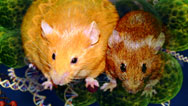
A Tale of Two Mice
In this audio slide show, hear how the epigenome can make identical-twin mice appear so different.
-
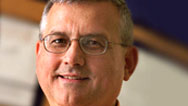
Epigenetics: Expert Q&A
Geneticist Randy Jirtle answers questions about epigenetics and its implications.
-
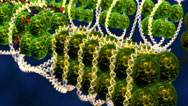
Epigenetic Therapy
Dr. Jean-Pierre Issa examines the connection between epigenetics, aging, and cancer.
-

Epigenetics
Learn how what you consume may affect the instructions your epigenomes send to your genes, altering DNA expression.
-
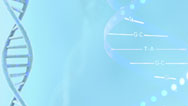
Four DNA Tests
Would you want to know more about your DNA? See what four types of genetic testing can reveal.
-
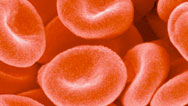
Gene Switches
Some genes turn other genes on and off. In this slide show, see how powerful these gene switches can be.
-

Genetic Tool Kit
The shared set of genes for body segments, possessed by all animals, are discussed in this five-minute video clip.
-
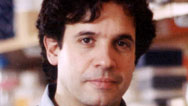
Personal DNA Testing: Expert Q&A
Harvard geneticist Rudy Tanzi offers caveats about commercial DNA testing and addresses a wide range of questions.
-
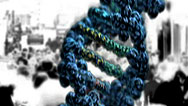
Personal Genome Project
Learn why George Church of Harvard Medical School hopes to recruit 100,000 people and sequence all of their DNA.
-

RNAi
A wayward petunia leads to the discovery of modest little molecules with enormous medical promise.
-

RNAi Explained
What is RNAi and how does it work? We'll show you using cartoon metaphors as well as standard scientific terms.
-
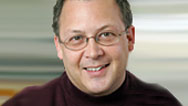
RNAi: Expert Q&A
Researcher Greg Hannon of Cold Spring Harbor Laboratory answers questions about RNAi and its medical applications.
-

Public Genomes
Many people are paying to have their DNA tested. Others are sharing their genomes on the Internet. Are they crazy?



